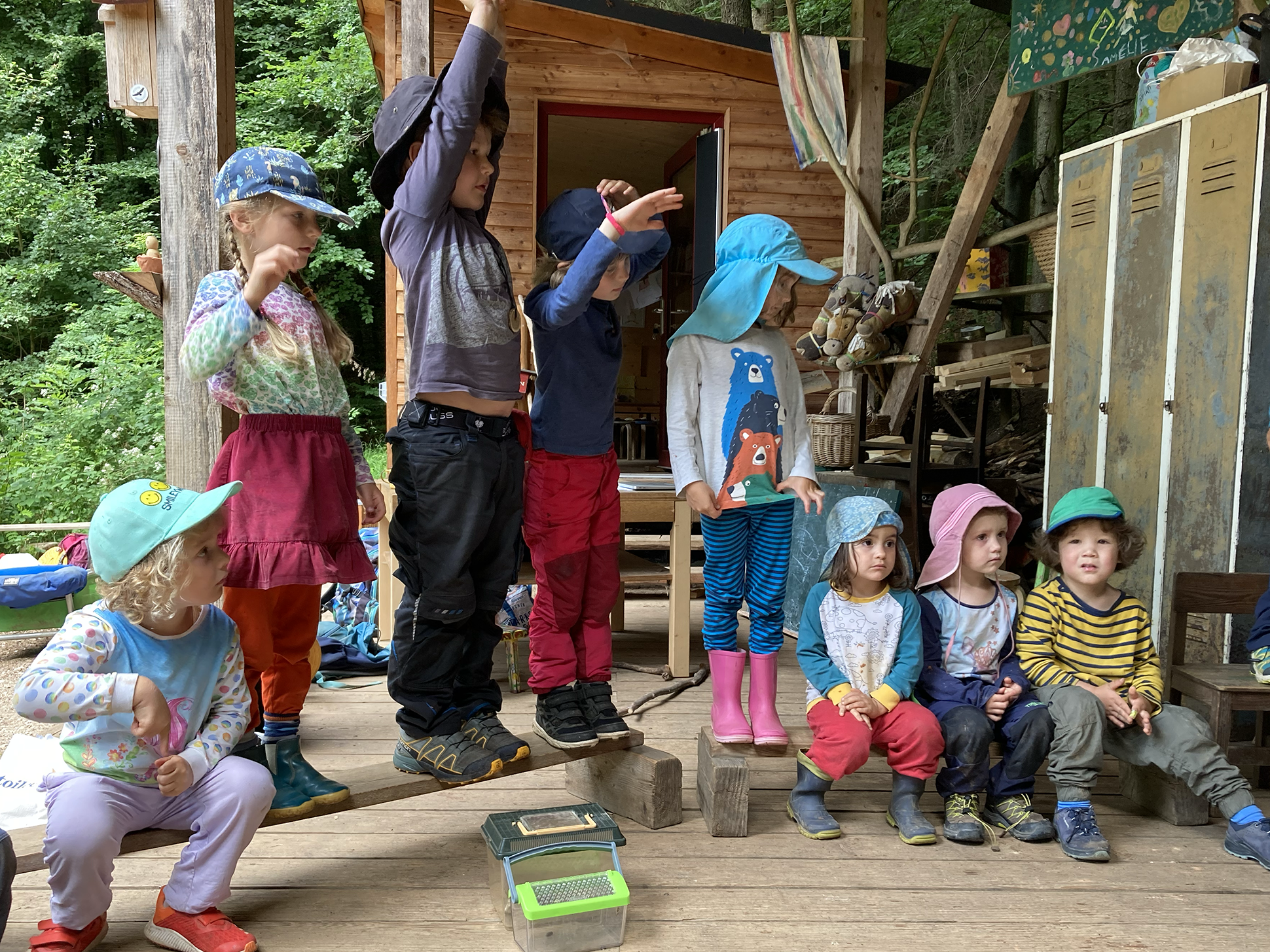Parkplatz hustle and bustle at the forest children’s place. Arriving. Laughing. Playing. The children gather in a circle and sing their welcome song. The morning sun captures in delicate condensation clouds and cheerful, rosy faces.
“Alright, let’s go now!” The educator is about to end the circle when a hesitant hand goes up. “Yes, Emmi?”
“I’d like to stay at the parking lot a bit longer today. Can we go up later?” The educator remains silent. The question is not directed at her. Everyone is involved. And the forest children don’t need an invitation: “I think it’s lovely here too!” “Me too.” “We do too. Shall we go up later? Who’s in favor?”
Uncomplicatedly, the group decides to leave for the forest area later. That’s how it feels right today. And tomorrow? We’ll see.
Participation in everyday daycare life doesn’t have to be complicated. On the contrary, it is actually quite straightforward. So inconspicuous. Yet, it holds so much power where it succeeds. When we talk about participation, we don’t primarily mean big projects and special actions. Instead, it’s about the fact that our children know: I’m allowed to have an opinion and express it. I can make suggestions, share my feelings, and have ideas. I am part of this community, and I am important!
Emmi spoke up because she is convinced of exactly that. How unremarkable her statement is on one hand. And how groundbreaking on the other! She casually presents her perspective. “I’d like to stay here longer.” Anyone else? She conveys her individual feelings to the group and receives feedback.
Yes, we also find it lovely here right now. And yes, let’s vote on your suggestion. Let’s think together about what we really want and then find a good solution for all of us. Not in chaos. Not in boycott. But through dialogue.
Emmi doesn’t wait for the next children’s conference. She isn’t even asked specifically. But she speaks up and participates. All on her own. Very naturally.
Like looking through a keyhole, this little observation in the parking lot gives us insight into the participatory culture of the facility. The naturalness with which Emmi presents her perspective is extraordinary. How high must the level of participation and consideration be for children to spontaneously and independently express their concerns? How well-practiced does the group need to be to reflect on the actual daily structure and adapt to the identified needs without adult intervention? How attentive is the educator to not feel addressed by the question?
It’s like a circus act: With admirable elegance, artists perform their tricks. Even the most difficult jumps seem effortless, almost natural, and that’s what makes them so beautiful to watch. The strength these athletes muster can only be guessed at. The high level of expertise is sometimes recognizable by the apparent effortlessness. The same applies to Emmi and the other forest children.
However, nothing comes from nothing. Those who achieve excellence have practiced a lot beforehand. How?
In our facilities, we work based on nature-oriented education. Participation has a central place here. We cannot imagine a daycare center where the most important and largest group of people is not involved. Therefore, the perspectives of children are the focal point of our daily routine. We can’t and won’t do without it.
And that is the crux of the matter: the pedagogical attitude. The genuine interest. The sincere commitment to respect children. Trusting in their expertise. The willingness of adults to step back. When children experience this from their caregivers, they also open up. Very calmly. Very naturally.
Taking children’s perspectives means taking their dignity seriously. Children are feeling and thinking individuals. They have emotions and needs. Children have ideas. And they have the right to be listened to and taken seriously. This right extends throughout the daycare day, actually every minute of their childhood. It’s not just about individual votes; it’s about having a say and being heard in everyday life.
Children’s participation starts in the smallest everyday situations and extends to the big questions in group, daycare, or even global matters. No topic is too trivial. None is too complex. We listen and create space for dialogue with children, asking about their topics and ideas, discussing their suggestions, and finding ways to understand and make decisions together. Age-appropriately, we embark on a research journey with children to find out what they wish for, what they like, and what they would like to change.
In this way, children can co-design and co-create their daycare environment. They are designers: individuals who have feelings and ideas, who think, believe in themselves, and advocate for their concerns. Our children have great design competence. This makes our work and daily routine better here and now. And in the long run: Our society. For everyone.



